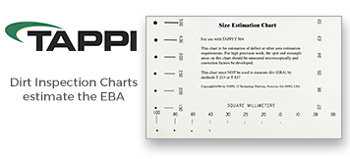 Search
Search
Use the search bar or filters below to find any TAPPI product or publication.
Filters
Content Type
Publications
Level of Knowledge
Collections
Journal articles

Magazine articles

Editorial: Agility and adaptation in a dynamic business world, TAPPI Journal January 2021
ABSTRACT: As we move into 2020, it's interesting to look back at the research topics that were covered in TAPPI Journal (TJ) the previous year. Members of the TJ editorial board organized diverse special issues on lignin, coating ,forming, and diverse papermaking and biorefinery topics, which are discussed in the following sections.
Magazine articles

Challenges and opportunities for china's paper industry, TAPPI JOURNAL, October 2000, Vol. 83(10)
Challenges and opportunities for china's paper industry, TAPPI JOURNAL, October 2000, Vol. 83(10)
Journal articles

Magazine articles

The role of hornification in the deterioration mechanism of physical properties of unrefined eucalyptus fibers during paper recycling, TAPPI Journal February 2024
ABSTRACT: Physical properties of cellulosic paper deteriorate significantly during paper recycling, which hinders the sustainable development of the paper industry. This work investigates the property deterioration mechanism and the role of hornification in the recycling process of unrefined eucalyptus fibers. The results showed that during the recycling process, the hornification gradually deepened, the fiber width gradually decreased, and the physical properties of the paper also gradually decreased. After five cycles of reuse, the relative bonding area decreased by 17.6%, while the relative bonding force decreased by 1.8%. Further results indicated that the physical property deterioration of the paper was closely related to the decrease of fiber bonding area. The fiber bonding area decreased linearly with the reduction of re-swollen fiber width during paper recycling. Re-swollen fiber width was closely related to the hornification. Hornification mainly reduces the bonding area of unrefined eucalyptus fiber rather than the bonding force. The work elucidates the role of hornification in the recycling process of unrefined eucalyptus fibers and the deterioration mechanism of paper physical properties, which will be helpful to control the property deterioration of paper and achieve a longer life cycle.
Journal articles

Magazine articles

Incorporation of post-consumer pizza boxes in the recovered fiber stream: Impacts of grease on finished product quality, TAPPI Journal March 2021
ABSTRACT: Grease and cheese contamination of used pizza boxes has led to misunderstanding and controversy about the recyclability of pizza boxes. Some collection facilities accept pizza boxes while others do not. The purpose of this study is to determine whether typical grease or cheese contamination levels associated with pizza boxes impact finished product quality. Grease (from vegetable oil) and cheese are essentially hydrophobic and in sufficiently high concentration could interfere with interfiber bonding, resulting in paper strength loss.Findings from this study will be used to determine the viability of recycling pizza boxes at current and future con-centrations in old corrugated containers (OCC) recovered fiber streams. These findings will also be used to inform the acceptability of pizza boxes in the recycle stream and educate consumers about acceptable levels of grease or cheese residue found on these recycled boxes.
Journal articles

Magazine articles

Evaluation of rice straw for purification of lovastatin, TAPPI Journal November 2021
ABSTRACT: Cholesterol synthesis in the human body can be catalyzed by the coenzyme HMG-CoA reductase, and lovastatin, a key enzyme inhibitor, can reduce hypercholesterolemia. Lovastatin can be obtained as a secondary metabolite of Aspergillus terreus ATCC 20542. In this study, rice straw of lignocellulose was used in aeration and agitation bath fermentation in a 1-L flask, and a maximal crude extraction rate of 473 mg/L lovastatin was obtained. The crude extract was treated with silica gel (230•400 mesh) column chromatography. Ethyl acetate/ethanol (95%) was used as the mobile phase, and isolation was performed through elution with various ethyl acetate/ethanol ratios. The highest production rate of 153 mg/L was achieved with ethyl acetate/ethanol in a ratio of 8:2. The lovastatin gained from the crude extract was added to 12 fractions treated with 0.001 N alkali, and acetone was then added. After 24 h of recrystallization at 4°C, the extract underwent high-performance liquid chromatography. The purity had increased from 25% to 84.6%, and the recovery rate was 65.2%.
Journal articles

Magazine articles

Control of malodorous gases emission from wet-end white water with hydrogen peroxide, TAPPI Journal October 2021
ABSTRACT: White water is highly recycled in the papermaking process so that its quality is easily deteriorated, thus producing lots of malodorous gases that are extremely harmful to human health and the environment. In this paper, the effect of hydrogen peroxide (H2O2) on the control of malodorous gases released from white water was investigated. The results showed that the released amount of total volatile organic compounds (TVOC) decreased gradually with the increase of H2O2 dosage. Specifically, the TVOC emission reached the minimum as the H2O2 dosage was 1.5 mmol/L, and meanwhile, the hydrogen sulfide (H2S) and ammonia (NH3) were almost completely removed. It was also found that pH had little effect on the release of TVOC as H2O2 was added, but it evidently affect-ed the release of H2S and NH3. When the pH value of the white water was changed to 4.0 or 9.0, the emission of TVOC decreased slightly, while both H2S and NH3 were completely removed in both cases. The ferrous ions (Fe2+) and the copper ions (Cu2+) were found to promote the generation of hydroxyl radicals (HOœ) out of H2O2, enhancing its inhibition on the release of malodorous gases from white water. The Fe2+/H2O2 system and Cu2+/H2O2 system exhibited similar efficiency in inhibiting the TVOC releasing, whereas the Cu2+/H2O2 system showed better perfor-mance in removing H2S and NH3.
Journal articles

Magazine articles

Z-direction chemical analysis for new application methods, TAPPI Journal January 2023
ABSTRACT: In conventional wet-end chemical addition during paper production, chemical distribution through the z-direction of the sheet is usually not considered an important characteristic. With a nontraditional chemical dosing approach, such as foam-assisted additive addition, the chemistry can appear at different concentrations throughout the sheet, typically in a z-direction gradient. To fully understand the strength properties of the sheet, it is helpful to view or quantify the chemical distribution through the sheet in the z-direction. One qualitative method uses a dye technique along with confocal laser scanning microscopy to generate an image where the relative chemical concentration can be observed. A quantitative method involves compiling nitrogen analyses of layered subsections of the sheet into a composite graph of relative chemical concentration vs. the z-direction of the sheet. Chemical distribution analysis can be paired with traditional z-direction strength tests, such as Scott bond and z-direction tensile, to help one understand and improve the chemical addition process and its effects.
Journal articles

Magazine articles

Recovery boiler back-end heat recovery, TAPPI Journal March 2023
ABSTRACT: Sustainability and efficient use of resources are becoming increasingly important aspects in the operation of all industries. Recently, some biomass-fired boilers have been equipped with increasingly complex condensing back-end heat recovery solutions, sometimes also using heat pumps to upgrade the low-grade heat. In kraft recovery boilers, however, scrubbers are still mainly for gas cleaning, with only simple heat recovery solutions. In this paper, we use process simulation software to study the potential to improve the power generation and energy efficiency by applying condensing back-end heat recovery on a recovery boiler. Different configurations are considered, including heat pumps. Potential streams to serve as heat sinks are considered and evaluated. Lowering the recovery boiler flue gas temperature to approximately 65°C significantly decreases the flue gas losses. The heat can be recovered as hot water, which is used to partially replace low-pressure (LP) steam, making more steam available for the condensing steam turbine portion for increased power generation. The results indicate that in a simple condensing plant, some 1%•4% additional electricity could be generated. In a Nordic mill that provides district heating, even more additional electricity generation, up to 6%, could be achieved. Provided the availability of sufficient low-temperature heat sinks to use the recovered heat, as well as sufficient condensing turbine swallowing capacity to utilize the LP steam, the use of scrubbing and possibly upgrading the heat using heat pumps appears potentially useful.
Journal articles

Magazine articles

Editorial: Agility and adaptation in a dynamic business world, TAPPI Journal January 2021
ABSTRACT: Being agile and adaptive in this current business world is both necessary and beneficial. Throughout last year, we all continued to both directly and indirectly experience the dynamic world where we live. As we wll know, in early 2020 the pandemic gained momentum and has fundamentally altered our daily lives, both personally in how we live and professionally in how we work.
Journal articles

Magazine articles

Probing the molecular weights of sweetgum and pine kraft lignin fractions, TAPPI Journal June 2021
ABSTRACT: The present investigation undertook a systematic investigation of the molecular weight (MW) of kraft lignins throughout the pulping process to establish a correlation between MW and lignin recovery at different extents of the kraft pulping process. The evaluation of MW is crucial for lignin characterization and utilization, since it is known to influence the kinetics of lignin reactivity and its resultant physico-chemical properties. Sweetgum and pine lignins precipitated from black liquor at different pHs (9.5 and 2.5) and different extents of kraft pulping (30•150 min) were the subject of this effort. Gel permeation chromatography (GPC) was used to determine the number average molecular weight (Mn), mass average molecular weight (Mw), and polydispersity of the lignin samples. It was shown that the MW of lignins from both feedstocks follow gel degradation theory; that is, at the onset of the kraft pulping process low molecular weight-lignins were obtained, and as pulping progressed, the molecular weight peaked and subsequently decreased. An important finding was that acetobromination was shown to be a more effective derivatization technique for carbohydrates containing lignins than acetylation, the technique typically used for derivatization of lignin.





